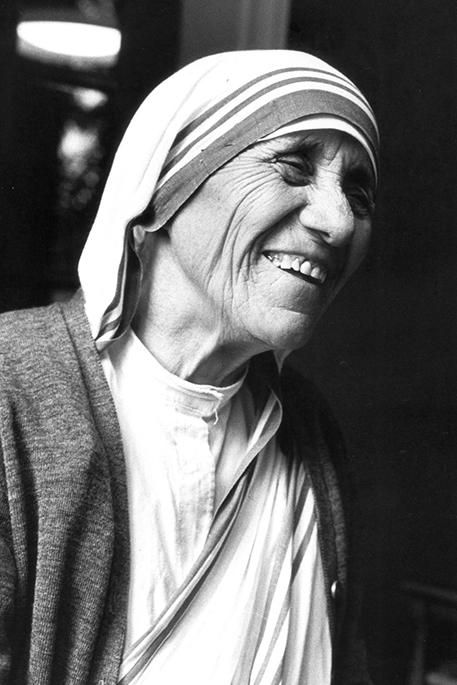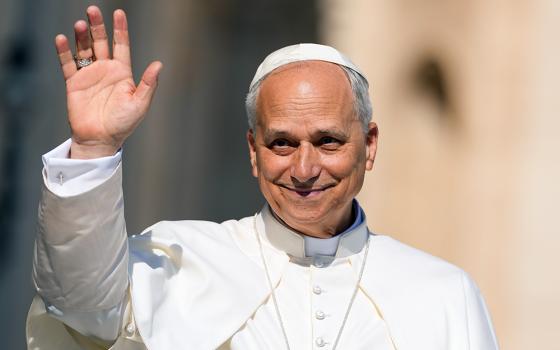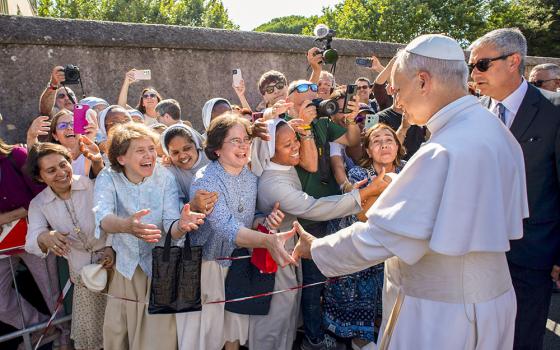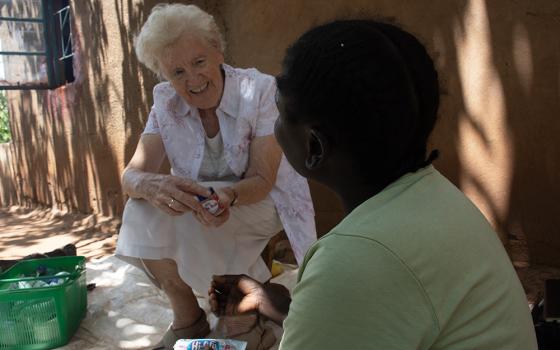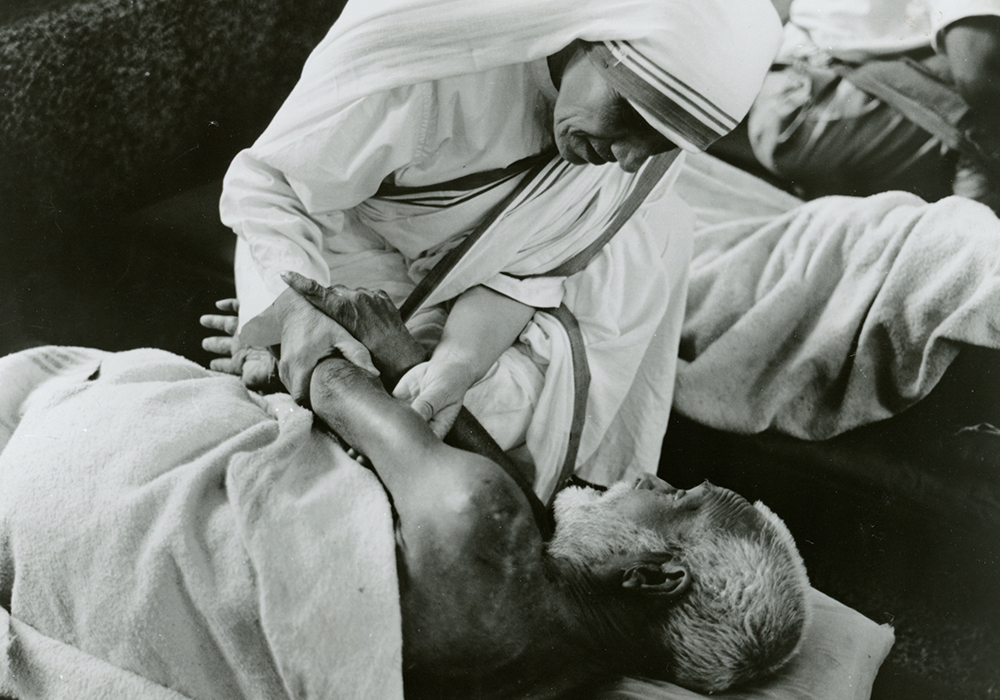
Mother Teresa of Kolkata cares for a sick man in an undated photo. (CNS/KNA)
Author's note: Sept. 5 is the anniversary of Mother Teresa's death and her feast day. In the Catholic Church, a feast day is set aside to honor a particular saint. The church celebrates this day to remember and reflect on her life, teachings and work.
In a letter dated May 11, 1991, from Mother Teresa to professor Thomas Farrell, chairman of humanities at Johnson & Wales University, she describes a stark contrast between giving from one's abundance and charism, which benefits humanity. Farrell proposed to help the cause of the Missionaries of Charity by writing and publishing an article on their work that would bring Mother Teresa publicity. She never sought publicity and kindly declined his offer, which may have felt like rejection to the professor.
However, her letter was not a rejection; it was more significant, revealing her most profound commitment to service and giving us her pure definition of giving despite being wealthy or poor. The letter provides us with an essential lesson about kindness and charity. The letter perfectly describes the light of the Holy Spirit that drove her for 87 years, a spirit that death cannot diminish.
Mother Teresa's letter acknowledges that while Farrell's intention to help was good, it did not align with her definition of giving with charism — a Greek term for a gift freely given, graciously, and without expectation. Charism embodies the concept of selfless giving and sacrifice. It is a shared mission within a community dedicated to serving the greater good. In the Catholic Church, it refers to a gift or grace given by the Holy Spirit to build up the community of the church.
She explains in this letter her concept of generosity, which is pure and selfless. She describes the stark contrast between giving from charism and offering from one's abundance, underlining that giving from surplus lacks the same significance, as it imposes no tangible cost on the giver, akin to a mere tax write-off.
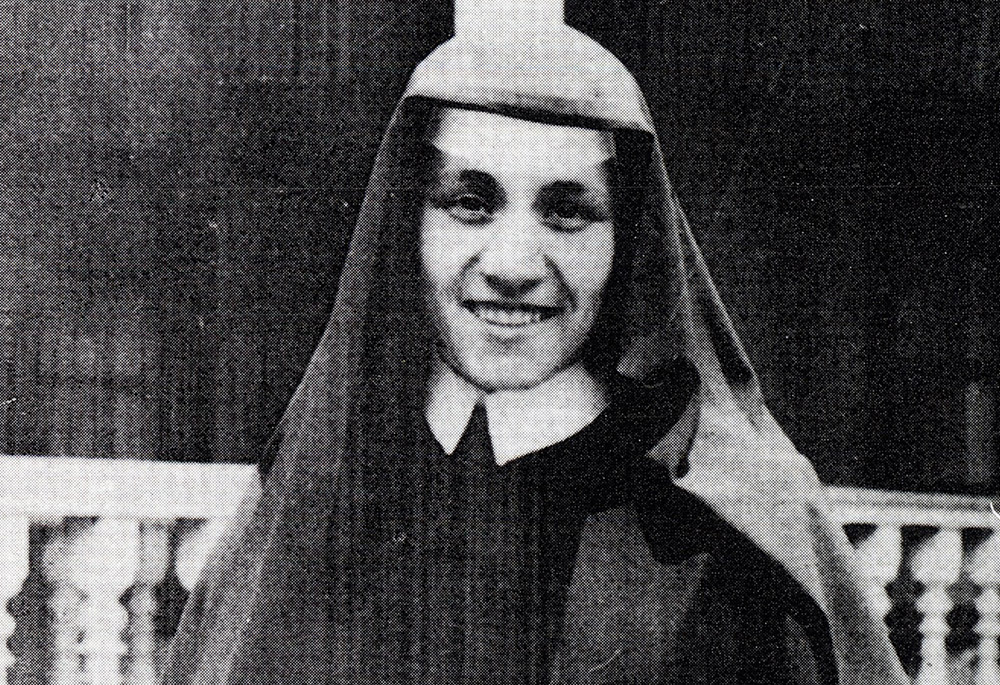
Sister Teresa, later to become Mother Teresa of Calcutta in India, is pictured as a member of the Sisters of Loretto. This photo was taken in the mid-1940s. (CNS/Courtesy of Missionaries of Charity)
After declining his proposal, she offers her definition of helping:
We [the Missionaries of Charity] and [the] poor fully depend on Divine Providence which comes to us through the spontaneous sharing of the rich and the poor. If you want to help, share something of yourself — not from your abundance — but until it hurts. Give what costs you — make a sacrifice — do without something you like, so you may share what you have saved thus with those that do not even have what they need.
This profound understanding of kindness and helping is a lesson that continues to inspire people today.
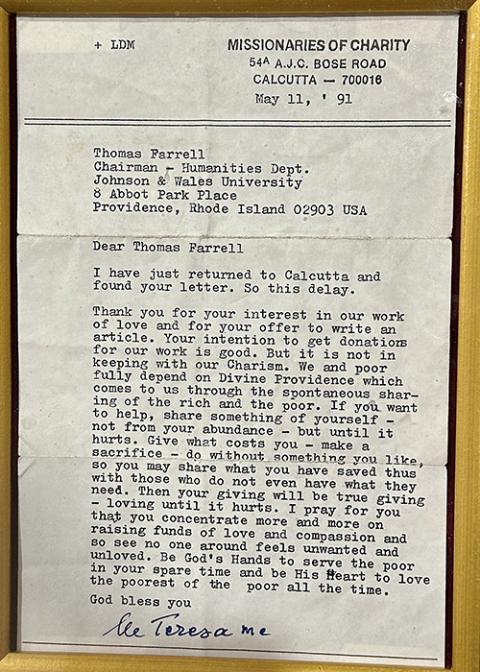
A letter dated May 11, 1991, from Mother Teresa to professor Thomas Farrell (Courtesy of Joel Rothschild)
Mother Teresa's elucidation of giving in her letter reminds us of the biblical parable Mark 12:41-44, where Jesus was at the temple with the disciples and witnessed something he used to teach the disciples about giving. He sat across from the temple's treasury and watched many rich people put in large sums of money. Then, a poor widow came along and put in two small coins. Jesus taught the disciples that the widow gave more than the rich. The rich had a lot of money to spare and only offered God loose change, money they did not depend on. Mother Teresa's letter within the context of her life exemplifies Jesus' teaching to the disciples.
Recently, I came across an article about charitable donations made by a tech entrepreneur that captured the public's attention. Over several years, he donated $500 million to his foundation, earning immense praise and establishing himself as a figure of generosity and philanthropy, almost reaching quasi-saintly status. While his contributions were celebrated widely, I felt compelled to reflect on Mark 12:41-44 and consider his vast wealth.
Despite widespread adoration, I was struck by the notion that he could do so much more; given his immense wealth, his $500 million donation constituted only 0.25% of his nearly $200 billion fortune. Mathematically, this was akin to someone with a million dollars giving just $2,500. The scale of his wealth reflects a proportional modesty in his donation. This perspective showcased the complexities of philanthropy and questions whether this billionaire's contribution signifies sacrifice.
Advertisement
The biblical parable from Mark 12:41-44 and Mother Teresa's teachings resonate here, emphasizing that faithful giving involves sacrifice — a sentiment seemingly missing from this entrepreneur's donations. While some may view my stance as overly critical of generosity, these reflections encouraged an even broader consideration of what it means to give. If a donation provides considerable public relations benefit to the donor and involves no real sacrifice, is it more of a strategic purchase than an act of genuine charity?
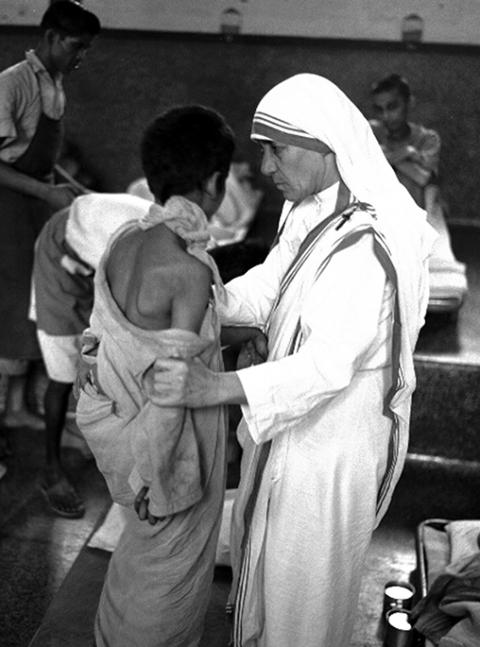
Mother Teresa of Kolkata, who brought smiles to the faces of countless sick and dying people, is pictured with a youth in an undated photo. (CNS/Courtesy of Catholic Press Photo)
This thought invites us to ponder the nature of giving and to strive for contributions that genuinely cost us, embodying the spirit of selflessness shown by Mother Teresa and the Missionaries of Charity. Her selfless giving is a divine example of charism that highlights a model of charity that emphasizes not just the act of giving but the intent and sacrifice behind it, urging everyone capable to genuinely and meaningfully contribute.
In her letter, Mother Teresa's definition of giving is as simple as Jesus' teaching: a gift from abundance does not have the same meaning as a gift with a sacrifice. There is a spiritual disparity between helping with gifts from abundance and Mother Teresa and her sisters' ethos of genuine sacrifice. Mother Teresa and the Missionaries of Charity exemplify a pure, selfless contribution to the brotherhood of man, which is incumbent on each of us who has accumulated something to offer.
Mother Teresa concludes her letter with a prayer to the professor:
I pray for you that you concentrate more and more on raising funds of love and compassion and so see no one around [you] feels unwanted and unloved. Be God's hands to serve the poor in your spare time and be his heart to love the poorest of the poor all the time.
Looking back throughout her life, we can only conclude that the letter's prayer and definition of charity are a call for everyone, rich or poor, to do more to serve the poor and less fortunate around us. When asked about the possibility of becoming a saint, she articulated her spirit again and answered, "If I ever become a Saint — I will surely be one of 'darkness.' I will continually be absent from Heaven — to light the light of those in darkness on earth."
Mother Teresa's writings reveal essential lessons for humanity long after she died. We are blessed that she took a few moments to write down some of her most crucial thoughts during her 87 years. Today, Mother Teresa's Missionaries of Charity works are worldwide, including in the former Soviet Union and Eastern European countries. They effectively help the poorest of the poor in several countries in Asia, Africa and Latin America, and they undertake relief work in the wake of natural catastrophes such as floods, epidemics and famine. The order also has houses in North America, Europe and Australia, where they take care of those in need, including shut-ins, people with alcoholism, people experiencing homelessness, and people with AIDS.
In the years ahead, other curators and historians will find more writings from the young girl Agnes Gonxha Bojaxhiu, who became St. Teresa of Kolkata; this writer hopes her words are shared freely worldwide so they continue to offer hope and encouragement.

